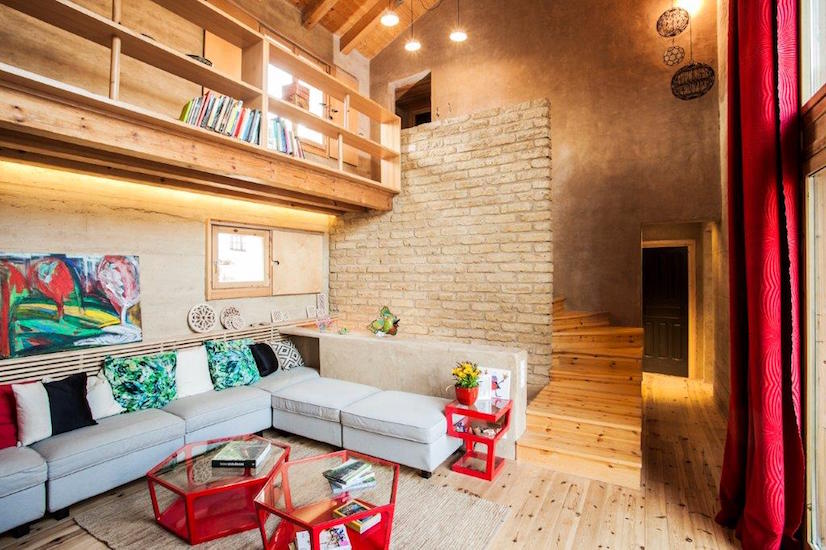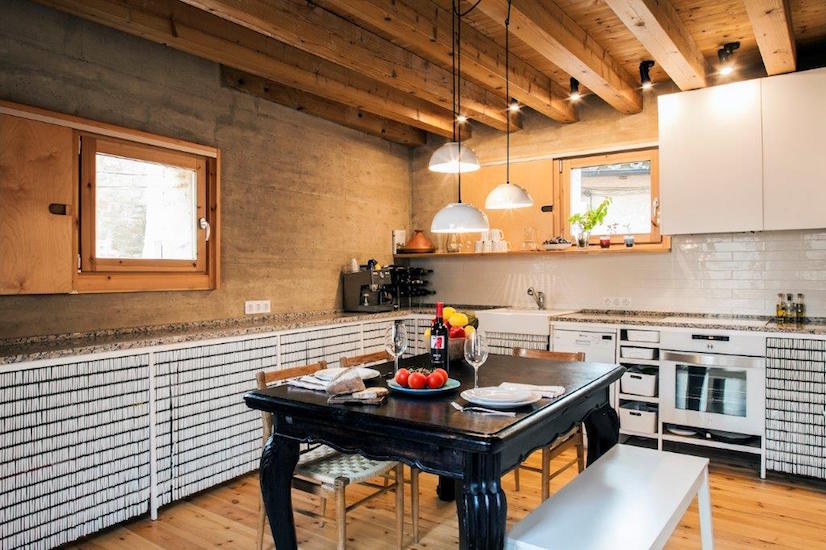21st Century Vernacular House
Ayerbe, Spain

South-facing patio.
Photo © Xavier d’Arquer

Coverings of interior partitions were made by local clay plasters.
Photo © Xavier d’Arquer

Photo © Xavier d’Arquer

Photo © Xavier d’Arquer

Photo © Xavier d’Arquer

Photo © Xavier d’Arquer

Photo © Xavier d’Arquer







Architects & Firms
Project size: 2,970 sf
Program: With this modern rammed-earth house, the architect’s aim was to ignite the community’s interest in a sustainable building typology characteristic of the region. Building upon the traditional construction techniques that disappeared during rural migration in the 20th century, the project was inspired by old local earthen buildings, taking cues from their orientations, morphologies, and use of local materials.
Location: Ayerbe, a village in the Spanish Pyrenees
Solution: Integral to the house’s design was the use of low tech, low energy, and low impact materials and building systems. The architect employed passive solar design methods—a Trombe wall and significant glazing on the south-facing facade, smaller windows on the north side, and skylights—to ensure thermal efficiency, natural light, and cross ventilation. In winter, earthen walls retain and radiate heat, helping to warm interior spaces at night.
Construction and materials: Eighty percent of construction materials—including earth, stone, and straw—are local. Sheep’s wool insulates the roof, while natural corkboards insulate the sawn timber floors.
Completion date: January 2016
PeopleArchitect:
Edra arquitectura Km0 General contractor: Construcciones Salinero S.L Photographer: Xavier d'Arquer |
ProductsStructural System - Mass concrete basements in under floor walls - Upper floors built in rammed earth bearing walls and sawn local timber in floors Earth walls include natural local barley straw mixed with the local earth Manufacturer of any structural components unique to this project: Construcciones Salinero SL
Exterior Cladding Masonry: Rammed earth walls, interior and exterior plastered with hydraulic lime mortar. Earth walls include natural local barley straw mixed with the local earth.
Curtain wall: A glass trombe wall is being built in part of the south face as a
Roofing Built-up roofing: Sheep wool isolation between wood battens and breathable waterproof sheet under tiles
Windows Wood frame: Pinewood windows and interior wooden shutters
Glazing Glass: Low emmissive glasses (4+16+6) in windows and trombe wall Skylights: Security low emmissive glasses (4+16+6) and solar chimney "solatube"
Doors Wood doors: Restored antique wooden doors
Interior Finishes Wall coverings: Natural local clay mortars Floor and wall tile: Ceramic vitrified tiles in bathrooms and kitchen Special interior finishes unique to this project: Local clay mortars in interior walls
Lighting Interior ambient lighting: Abundant natural lighting in all the rooms of the house Dimming system or other lighting controls: LED lightling in all the house
Plumbing Policombustible (wood pellet, almond shells,olive stone, etc locally produced available) biomass boiler
Energy Passive solar strategies: - Bioclimatic design that ensures light/heat access through the south face (windows, and skylights) and into the house - A trombe wall is part of the south face - Earth walls retain heat, avoiding thermal loss in winter and over heating in summer. - User shadow control - Natural cross ventilation - Garden corrects higrothermal conditions of the south face, mitigating extreme weather conditions during the winter and summer - A fire place helps to heat the house Other unique products that contribute to sustainability: Conscientious material selection has been made for low environmental impact—a life cycle analysis has demonstrated a 50% decrease in environmental impact, and a 60% reduction in greenhouse gases emissions. Additionally, by involving the community, local traditional building systems have been renewed. Add any additional building components or special equipment that made a significant contribution to this project: The project allows for the user to be aware of and to control his or her own comfort. |










